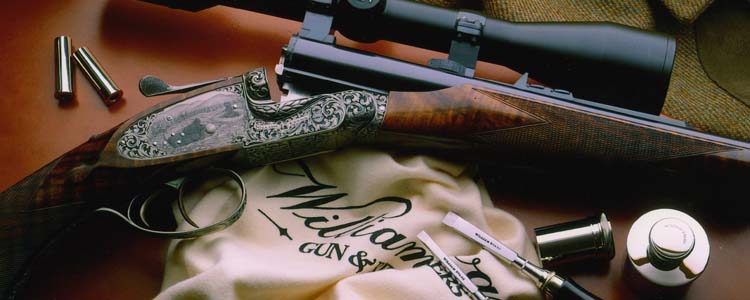Thermal imaging cameras used for deer management
During the later part of March FLIR dispatched a representative from the Netherlands to the UK to spend the day with Peter Jones from County Deer Stalking.
The aim of the day was to establishing the use and application of thermal imaging cameras in Deer Stalking.
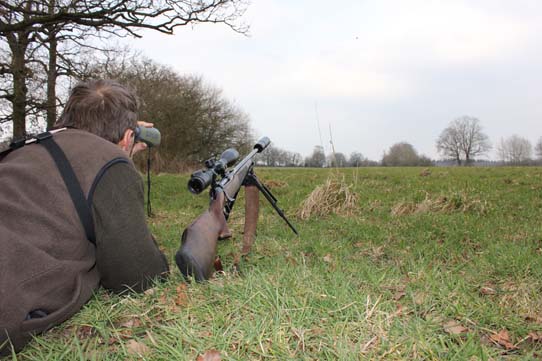
The day was a great success and Peter Jones was able to demonstrate the camera’s application in spotting a number of deer including Roe and Fallow, one of which was cleanly dispatched on the day.
FLIR have since published the story which has been supplied to all their distributers.
The following is an extract taken from their article.
An addition to the stalking kit
Typically the standard equipment for deer stalkers is a rifle with telescopic sight, a pair of binoculars and a knife for gralloching. “For the last two years I heard and read more and more about using thermal imaging cameras for outdoor applications”, says Peter Jones. “I was really keen to get my hands on one to find out how I could use this technology during stalks”. Never having used any type of night or thermal vision before, Peter was presented the opportunity to add a FLIR Scout PS-32 to his kit of equipment.
FLIR Scout PS-Series are the smallest and most affordable thermal imaging cameras in its class. They are equipped with an uncooled, maintenance free, microbolometer detector which delivers crisp thermal images in any day or night situation. The FLIR Scout PS-32 produces thermal images of 320 x 240 pixels. Users who do not need this high resolution can choose the PS-24 which produces images of 240 x 180 pixels. All cameras are equipped with advanced internal camera software that delivers a crisp image without the need for user adjustments.

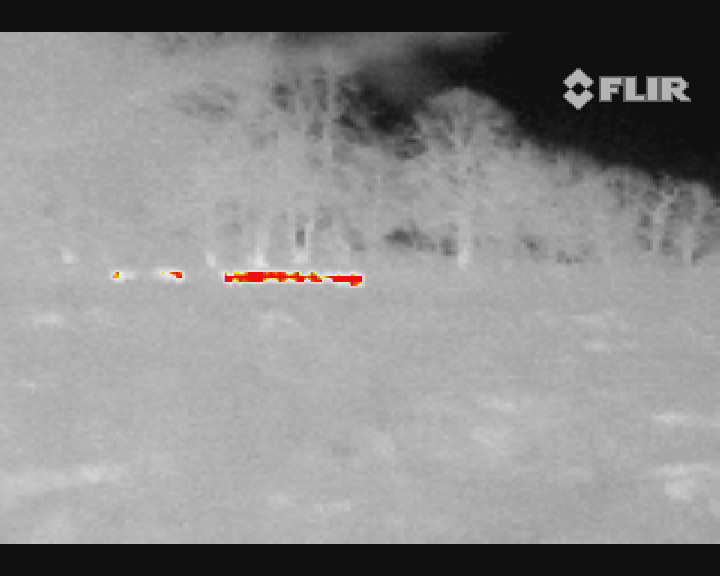 These deer are easy to spot thanks to the InstAlert™ feature, which colors the hottest part in the thermal image red, available on all FLIR Scout PS-Series.
These deer are easy to spot thanks to the InstAlert™ feature, which colors the hottest part in the thermal image red, available on all FLIR Scout PS-Series.
Definitely an addition
Despite using the FLIR Scout PS-32 for only a short while, Peter soon discovered the advantages of using thermal imaging in his profession. “With the pressures of hunting, deer have become increasingly nocturnal, which makes the night ideal for counting deer numbers”, he explains. “Usually counting is done in the early morning or late in the evening, but with the use of a thermal imaging camera this can now be done at night, providing more accurate records.”
In contrary to other countries, the UK prohibits the culling of deer at night. "But a thermal imaging camera is not only a great tool for use in the dark, on a couple of occasions recently, I have seen for myself how useful thermal imaging can be during the day when I used the FLIR Scout PS-32 to scan dense woodlands, to see if I could pick up any heat signatures," said Peter. "And it worked! In only one month there were three occasions where I picked up heat signatures from deer which would have remained unseen when using other, more traditional methods. Lots of people set out to stalk in the morning when it is still dark. A thermal imaging camera allows you to scan the field to establish if there are deer around. If there are, it gives you the confidence to wait until it is light enough to approach and take a shot."
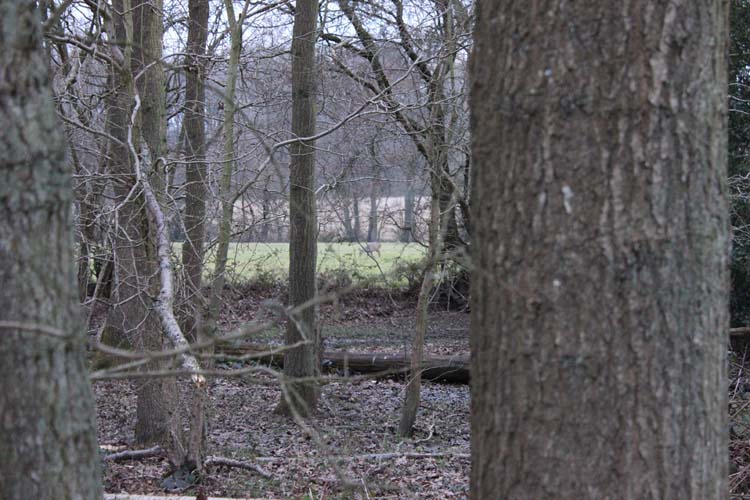
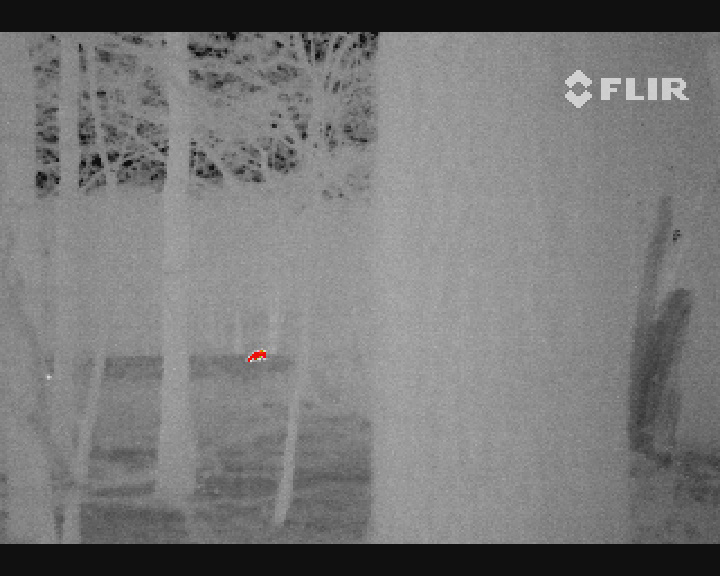 This heat signature of deer clearly shows up in the thermal image looking through the trees.
This heat signature of deer clearly shows up in the thermal image looking through the trees.
Following up on wounded animals
At County Deer Stalking it is important that all deer stalking is carried out in a safe and humane manner and that culling is achieved according to the Best Practice Guidelines for Deer Management. A deer must be shot in such a way that it does not suffer. On occasion however, despite best intentions, this is not always the case. Peter explains; “When a deer is shot, it will normally run a little before it bleeds out. However on rare occasions when a deer is not shot cleanly it may be able to make off a long distance into cover. Previously it took me hours in the dark to find a wounded deer, achieved only by following the blood trail with a flash light. With the FLIR Scout PS-32 it is possible to pick up the heat signature of an injured deer allowing me to rediscover and dispatch it more quickly".
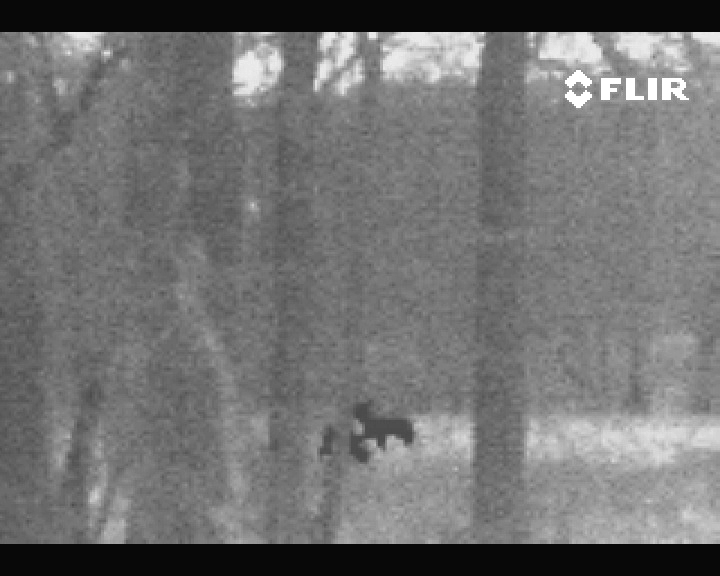
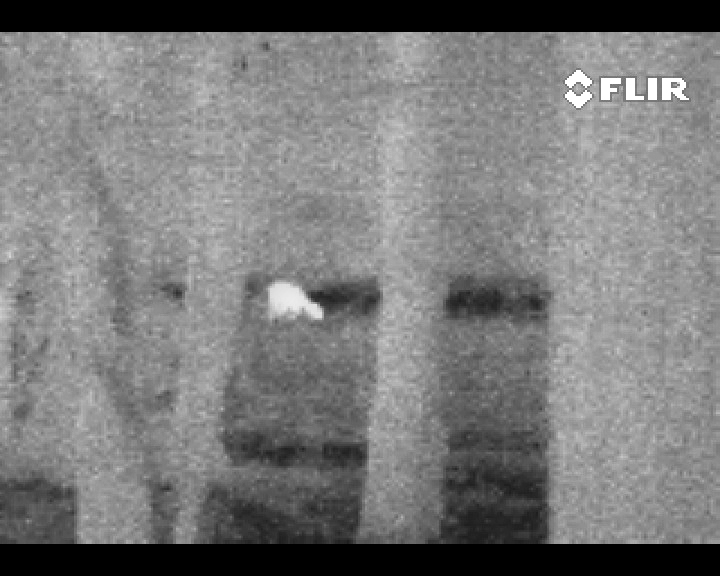 In addition to the InstAlert mode, where the hottest objects are highlighted red, there is also the choice for Black Hot or White Hot mode.
In addition to the InstAlert mode, where the hottest objects are highlighted red, there is also the choice for Black Hot or White Hot mode.
Learn to work with it
A thermal imaging camera is not a magic tool that will solve all your problems. In combination with other equipment for deer stalking it is however a very useful addition. “It takes practice to work with a thermal imaging camera in combination with your binoculars”, says Peter. “Gauging distance is difficult with a thermal imaging camera. If you use a thermal imaging camera in combination with your binoculars it also takes some time to get used to the different images that the two tools provide.” A thermal imaging camera is a perfect tool to locate a heat signature, but it is not always possible to identify which animal the signature belongs to. “Over typical shooting distances you cannot always clearly identify the source of a heat signature, for example smaller species of deer can be confused with other wildlife such as foxes, hares and pheasants. Therefore a thermal imaging camera will not replace other equipment but it is a very good addition to the equipment a professional deer stalker uses. Especially the FLIR Scout PS-Series, which is small enough to fit in your pocket and light enough to carry with the rest of your kit.”




